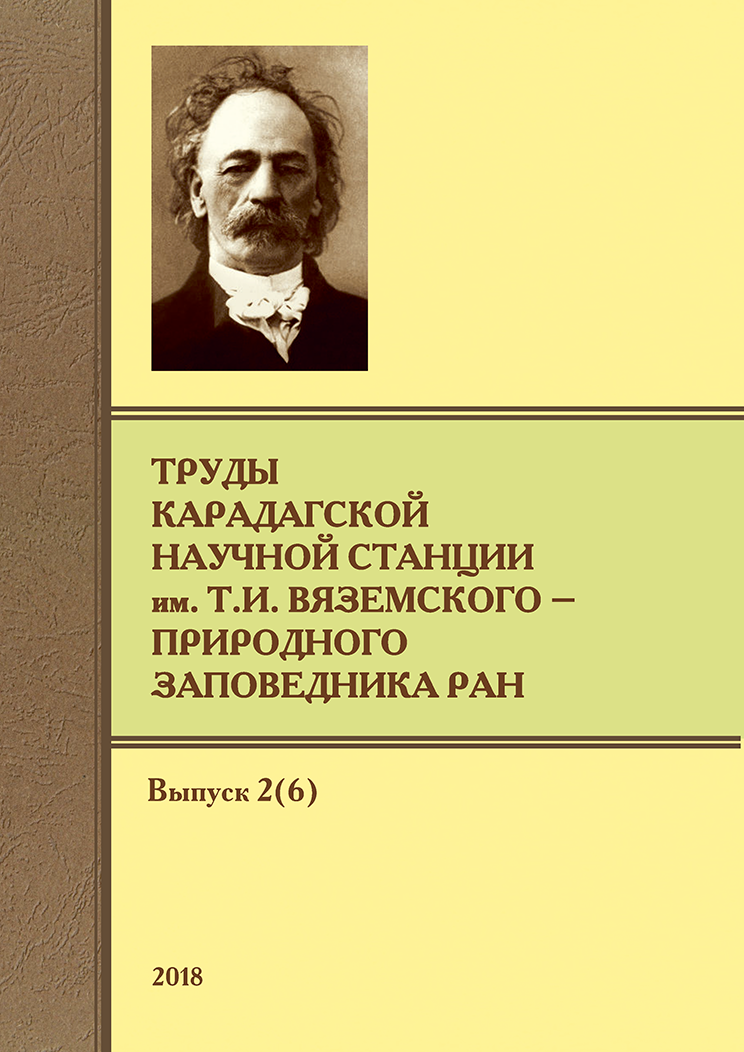Гидролого-гидрохимическая ситуация и состояние меропланктона на взморье Карадага (2017 г.)
##plugins.themes.ibsscustom.article.main##
##plugins.themes.ibsscustom.article.details##
Аннотация
Представлены результаты комплексных исследований в прибрежной акватории Карадагского природного заповедника и в Коктебельской бухте, проводившихся в мае и сентябре 2017 г. Изучено влияние хозбытовых стоков поселков городского типа Коктебель и Курортное на распределение гидрологических и гидрохимических полей, а также на состояние меропланктона на прибрежных станциях четырех разрезов. Показано, что термохалинные поля во время обеих съёмок были достаточно однородными. Некоторое увеличение горизонтальных градиентов наблюдалось в районе м. Мальчин. По величинам БПК5 и окисляемости, превышающим предельно-допустимые концентрации (ПДК) и величинам коэффициентов загрязнения Кз (БПК5 / окисляемости), превышающим 1, выявлены районы, загрязненные хозбытовым стоком. Рассчитано содержание органического углерода (Сров) на поверхности прибрежной зоны Карадага и Коктебельской бухты и проведено сравнение с его содержанием в начальный период исследований (2004 г.). По величинам отношения Рмин:Рвал <30% и высоким концентрациям кремния и фосфора минерального выявлено влияние азовоморских вод на гидрохимическую структуру исследуемой акватории. В мае исследован таксономический состав меропланктона прибрежной акватории Карадага. На основе расчёта парных коэффициентов корреляции рассмотрены связи между всеми изучаемыми абиотическими параметрами и количественным содержанием меропланктона. Проведено сопоставление величин общей численности меропланктона с содержанием биогенных веществ, полученных в мае на прибрежных станциях разрезов.
Авторы
Библиографические ссылки
Ковригина Н.П., Павлова Е.В., Мурина В.В., Лисицкая Е.В., Смирнова Ю.Д. Гидрохимическая характеристика и меропланктон прибрежных вод Карадага (2004 г.). Экологическая безопасность прибрежной и шельфовой зон и комплексное использование ресурсов шельфа: сб. науч. тр. / НАН Украины, Морской гидрофиз. ин-т, Ин-т геологических наук, Одесский филиал Ин-та биологии южных морей. – Севастополь, 2007. – Вып. 15. – С. 139–151.
Ковригина Н.П., Трощенко О.А., Лисицкая Е.В., Поспелова Н.В., Еремин И.Ю. Гидролого-гидрохимические и гидробиологические исследования на Карадагском взморье в теплый период 2016 г. // Труды Карадагской научной станции им. Т.И. Вяземского – природного заповедника РАН. – 2017. – № 1 (3). – С. 38–53 3. Руководство по гидрологическим работам в океанах и морях. – Л.: Гидрометеоиздат, 1977. – 725 с.
Методы гидрохимических исследований основных биогенных элементов. – М.: ВНИРО, 1988. – 119 с
Методические указания № 30. – М.: Гидрометеоиздат, 1966. – 39 с
Скопинцев Б.А. Формирование современного химического состава вод Черного моря. – Л.: Гидрометеоиздат, 1975. – 335 с.
Ковригина Н.П., Трощенко О.А., Щуров С.В. Особенности пространственного распределения гидролого-гидрохимических показателей прибрежной акватории Карадага в современный период (2005 – 2006 гг.) // Карадаг – 2009: Сборник научных трудов, посвящённых 95-летию Карадагской научной станции и 30-летию Карадагского природного заповедника Национальной академии наук Украины. – Севастополь: ЭКОСИ- Гидрофизика, 2009. – С. 446–461

 Google Scholar
Google Scholar